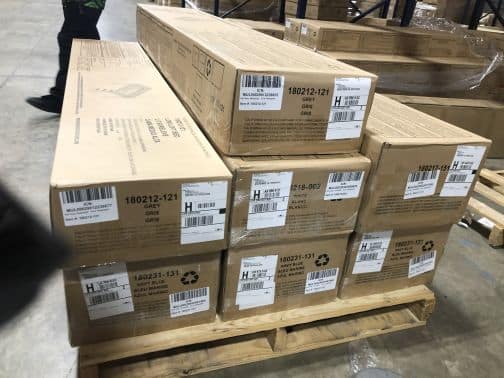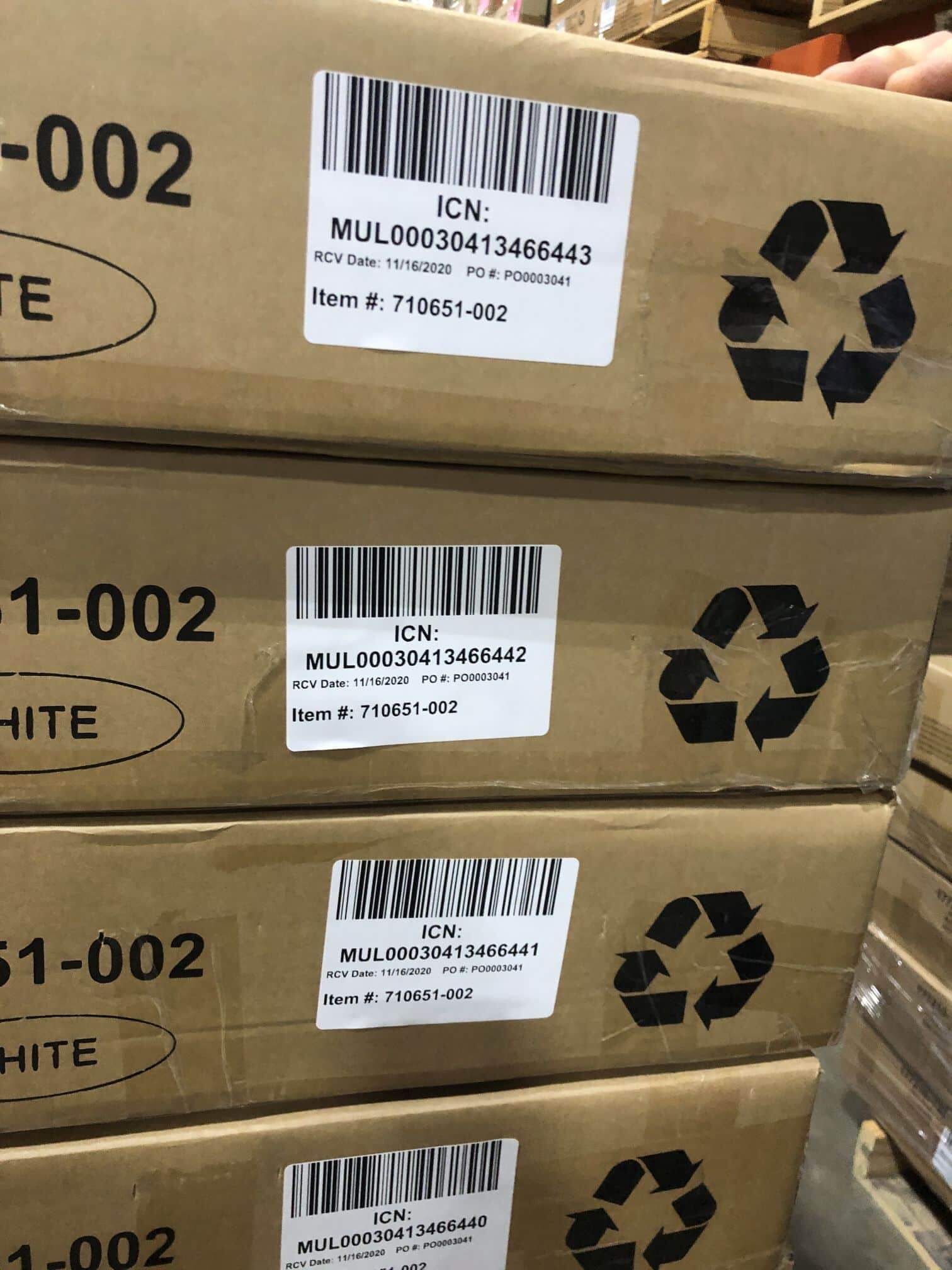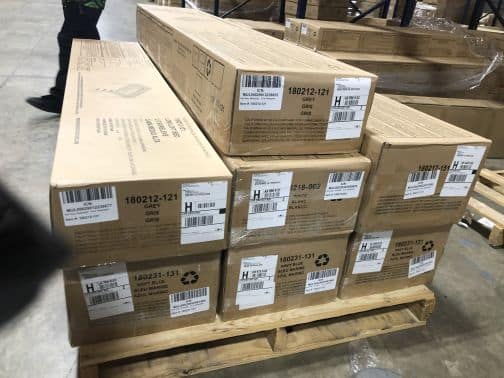
WMS for Furniture Logistics
The demand for furniture is enormous in the United States, and continually growing. But a major dichotomy exists in this more than $60 billion market – wholesale furniture distributors are still using old systems and outdated technology. While nearly every aspect of life has been ingratiated with automation, furniture companies seem to be lagging behind in their furniture logistics software.
Wireless Data Systems, Inc. (WDS) has had the pleasure of working with a number of furniture companies in our pursuit to transform the industry. Our Warehouse Management System (WMS) has become the centerpiece of that transformation, creating successful operations from the top down. A hybrid of barcode technology, RFID, and IoT automation are examples of the current technologies we are deploying to provide fast and accurate data collection on the warehouse floor and in the delivery operations. This is something that we have been preaching for over 20 years.
Unfortunately, there are a lot of potential challenges inherent in dealing with furniture, most notably damage to the products. These challenges are not only disruptive but extremely costly. The unfortunate situation usually plays out like this:
- In a warehouse environment, these large, heavy objects are often dropped or bumped against edges of beams
- Damage occurs, but it is internal damage that is not visible from the outside
- The product is delivered to a person’s home and damage is discovered once the installers open the product
- The customer is angry and disappointed
- The damaged product must be returned or repaired
- The customer has to wait for the repairman or a replacement to be picked and shipped (assuming the product is in stock)
- The customer has to reschedule the delivery and plan to be home an additional day
- Additional scenarios that are costly and damage customer relations include items missing from the delivery and wrong items delivered
The above scenarios are commonplace, a simple mistake that ends up costing furniture companies an exorbitant amount of money. A lack of a furniture logistics system, organization and relevant technology lays the foundation for these all too common scenarios to occur.
WDS has built a WMS from the ground up that serves as a robust solution to the challenges above and beyond. Below, we outline the features of our customizable system that would benefit every furniture supply chain operation.
Intelligent, Serialized Barcode Labeling/Tracking
At the heart of any successful warehouse management system must be an advanced labeling structure. First and foremost, a labeling system establishes accountability for the workers that are handling items. The WDS WMS assigns serialized barcode labels to all of the products being received from their manufacturing plants and suppliers. As the products are being received on the dock, the system verifies them against the PO from the vendor as the labels are attached to the items. Then, the items are added to a cart or pallet, which is also serialized. Once the product is placed on the cart or pallet, the system minimizes the frequency of the product being picked up and dropped down to reduce opportunities for damage. In many cases, the next time the product is picked up or dropped down gain is when it is moved from outbound order staging to placement on the delivery truck. Plus, with serialized tracking the system will show every movement of the item, and who executed the movement.
This level of tracking is imperative to monitor damage and a wide range of forensics relevant to minimizing loss and maximizing productivity. Consolidation and validation of like SKUs is paramount in preventing damage as well as assuring multi-box SKUs will ship with all necessary boxes (i.e. kit or assembly items). Chain of custody and history data is readily available and accessible with WDS WMS.
Split ICN & Parent-Child Relationships
Another unique feature of WDS WMS is that it allows for half quantities. For example, if two chairs are packaged inside a box it is processed as part of the same dynamic ICN. Many times, our clients are sending replacements to customers or additional items to the customers that do not meet package size configuration (i.e., two chairs in a single box). To work around this, our system allows a quantity of .5. As a result, 1 of the chairs will be removed from the box, repackaged, and relabeled.
Known as Split ICN, this process means that the original ICN is kept but the quantity is changed from 1 to .5. Then, the new label generated for the single chair going to the customer is applied to the new box and the ICN. Now, the items have a parent-child relationship to the original ICN. And of course, the quantity in the second box is .5 as well.
The system manages parent-child relationships across a single part number or SKU, and multiple boxes needed. For example, SKU number BED12345 may consist of 3 boxes. The frame, headboard, and footboard. If an order is being picked for that bed, the user cannot pick boxes 1 and 2 and forget 3. The system requires all three boxes to be picked for the single line on the order for that bed.
Directed Put Away & Mixed Item Sorting
The pickup and place down refers to the exact movements of the products, and this is where most of the damage occurs. In our model, however, the objects are placed on the cart or pallet and the cart or pallet is directed to the end of the storage aisles. Once the cart is full, our system instructs the user to the correct aisle for the product storage. So, as all of the items are placed on the cart or pallet, the system is building a “manifest” for that cart or pallet.
The user is then ready to move the cart or pallet to the end of the aisle where the storage bins are located. The user scans that license plate label or manifest label on the cart or pallet and, due to the product loaded, the system knows where to instruct the user to place it. Like items are sorted to the cart or pallet – a critical component so items like mattresses and headboards are not on the same cart or pallet.
Organization is further perfected with the introduction of mixed item sorting. If the purchase order is received from the vendor’s truck includes a mixture of items, those items are segregated and grouped on the carts or pallets. Once the cart or pallet is placed at the end of the aisle, the worker in that aisle working from a Cherry Picker forklift lifts the platform and drives up and down the aisle placing the items into storage.
The driver lines up the platform even with the floor of the bin and then slides the product from the platform to the bin location. As a result, the placement of the product is simply sliding it from the platform to the floor of the bin. This means no lifting and setting down by the user, which vastly reduces the likelihood of product damage.
Advanced Picking Technology
Our advanced picking technology applies many of the same principles as our directed put-away system. The user on the forklift has a computer mounted on the forklift which instructs him to pick orders for items that are in his aisle. The user logs on to the terminal. selects picking, and our system displays a list of orders that are assigned to that user.
NOTE: In the scenario below, the order picking is split between assigned aisles that workers are assigned to. The system may also be configured to direct picking of one order to one worker, and the worker is directed by the system to each aisle that has items for the order.
The WDS WMS sorts the orders so that the user knows which aisle has items required for that order and the system distributes the picklist to the user’s computer screen based on the aisle selection. The system displays the first location that contains an item to be picked and the driver positions the forklift at the mouth of that bin location and scans the serialized label that was applied during the receiving process. Then the system verifies that that serial number is assigned to an item that matches the item for the order, and the user slides the item from the bin location to the platform on the forklift. This process continues for all items in that aisle that are needed for the order.
As the platforms become full of product, the driver goes to the floor level with the forklift and then drives to the end of the aisle for cart or pallet drop off. Again, no lifting or placing of the items is involved here, greatly reducing the threat of product damage.
Next, runners with tugs drive up and down the ends of the aisles and grab the trailer platform or pallet with the picked products and tow them to shipping lanes where orders are being staged for delivery. The product is left on a cart or pallet until the last possible minute when the items are removed from the cart or pallet and placed in the bed of the delivery truck. At that point, the driver of the truck is equipped with a manifest of all of the items needed for his route that day and the orders that are being delivered along that route.
The driver confirms and takes responsibility for the items on the truck. The WDS system assists with this confirmation as it will not allow any items on the truck that do not have an order for the item on the route that the truck has been assigned. In doing so, there is a very high level of verification as the items are picked and placed on those shipping lanes, consolidated into a complete order for the route on the truck, and loaded on the truck.
FIFO Management & Rules
First-in first-out (FIFO) is critical when it comes to furniture. Logic is placed in the system to confirm if the item is in the bin already. If so, the system directs the worker to an empty bin nearby to place the item there. The FIFO management and rules make sure that customers are not receiving items with aged/faded packaging covered in dust. The system is also structured to flag workers who perpetually pull newer items. With this structure in place, management is able to ensure that the warehouse workers are pulling correct items.
In addition, items are grouped/consolidated in order so that the truck is loaded based on the sequencing of stops along with the delivery reroute.
Hot Pick Optimization
When a customer chooses to pick up an item at the warehouse, the WDS WMS may utilize graphic displays for hot picks. With graphic displays in a grid, the workers in the warehouse can quickly retrieve the item from the aisle when the needed box flashes in red. Our system’s hot pick optimization allows for added efficiency based on data.
Geofencing & Proof of Delivery
Recently developed by our IoT Division, our GPS and geofence feature adds unmatched reliability, accuracy, and real-time tracking. When routes are established for the day based on scheduled deliveries, the WDS system uses that route and delivery schedule to create the routes for the physical trucks that the system will be loading material on. Each of the stops on the route is identified with a geofence around the location on the route. Meaning, each address for each stop has a geofence created with the perimeter around the location for all the longitude and latitude GPS coordinates.
The driver is equipped with a proof of delivery module running on a smartphone application that uses these GPS coordinates to verify the delivery. As the driver drives to the first location, the GPS validation confirms that the smartphone is within the geofence for the first stop. As the product is being scanned from the truck to the customer’s home or business, the system is validating that the longitude and latitude location of that device during the scanning is within the geofence coordinates. The WDS system alerts the user to any anomalies and the system may send email alerts to management notifying them that there was an anomaly in the delivery from that route.
As a note, the newest enhancement being added to the POD module is the ability for the installer to take a picture of the items post-delivery or installation. This also reduces the opportunity for post-delivery and installation damage claims.
Real-time validation of SKUs ensures a perfected proof of delivery process. The geofence mapping feature is critical and truly sets WDS WMS apart from any competition in the furniture industry.
The WDS WMS verifies that the items being delivered are not for another stop on the route. When the user indicates that they are done scanning all the items for that order at that location, our system verifies that nothing was left behind. The same course of action is applied in the warehouse when the truck is loaded. The system will not allow users to forget items on the dock that need to go on that truck for delivery.
Route & Reroute Utility
In addition, the system allows for non-deliverable conditions. This means that if the driver stops at the customer site and nobody is home, there is a trackable structure in place. Those items are left on the truck and returned to the warehouse to be rescheduled for the next time the customers are available.
Wave Picking
While not always applicable in the furniture space, wave picking allows for the system to look at all orders for the day and find like items in the orders. When the WDS WMS operates wave picking, a person is sent to a bin location once as opposed to multiple times to pick up additional items. This is a critical component to not only reducing deadhead travel but also minimizing the wear and tear on equipment and products.
Customizable Software
Building a furniture warehouse management system from the ground up meant diving deep into the wants and needs of large furniture companies. As a result of creating the WDS WMS, we have found that each customer has unique needs to improve their furniture logistics operation. A one-size-fits-all software solution would fail to meet these specific, dynamic needs. With this in mind, our robust software can be modified and customized to fit the exact mold of our customers’ particular requirements.
For more information on the WDS furniture WMS, contact our office at your earliest convenience to speak to a software specialist.


